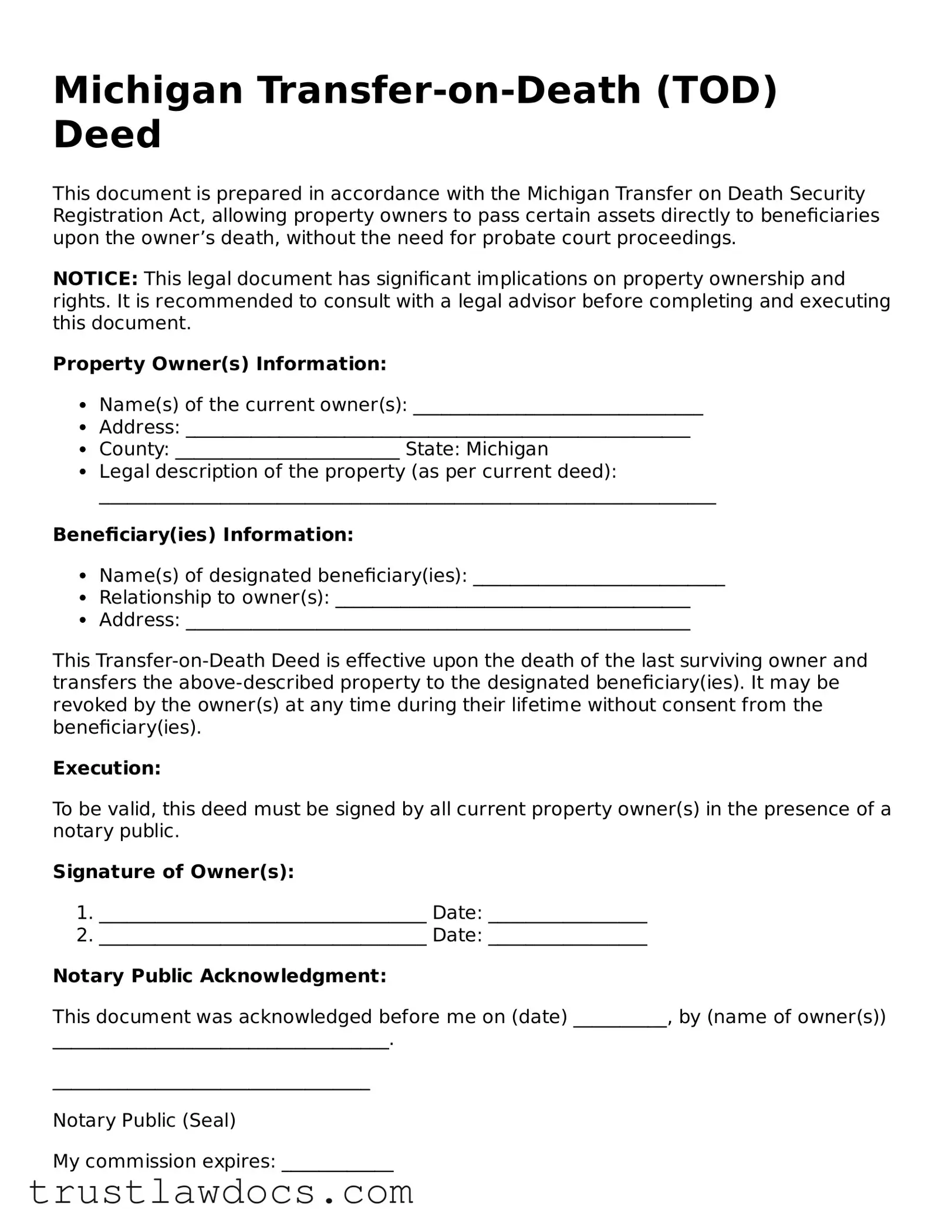What is a Michigan Transfer-on-Death (TOD) Deed?
A Michigan Transfer-on-Death (TOD) Deed is a legal document that allows property owners to pass their real estate to a named beneficiary without the need for a will or going through probate court. Upon the death of the property owner, the property is transferred to the beneficiary directly.
Who can use a TOD Deed in Michigan?
Any individual who owns real estate in Michigan and wishes to transfer their property upon death without the complexities of probate can use a TOD Deed. It's crucial that the individual is of sound mind and legal capacity to execute this document.
How does one create a TOD Deed in Michigan?
To create a TOD Deed in Michigan, the property owner must complete a deed form that complies with state laws, including the legal description of the property, and must designate a beneficiary. The deed then needs to be signed in the presence of a notary and recorded with the county recorder's office where the property is located before the owner's death.
Can a TOD Deed be revoked?
Yes, a TOD Deed in Michigan can be revoked at any time by the property owner before their death. This can be done by preparing a new TOD Deed that revokes the previous one, transferring the property to someone else, or creating and recording a document that specifically revokes the TOD Deed.
Are there any limitations to what can be transferred with a TOD Deed?
In Michigan, a TOD Deed can only be used to transfer real estate. This includes houses, condos, and land. It does not apply to personal property such as vehicles, bank accounts, or other types of assets.
What happens if the beneficiary predeceases the owner?
If the beneficiary named in the TOD Deed predeceases the owner, the deed becomes ineffective. The property owner should then execute a new TOD Deed naming a different beneficiary to ensure the property is transferred according to their wishes upon death.
Do beneficiaries need to accept the property?
Yes, beneficiaries named in a TOD Deed must formally accept the property after the owner's death. This process typically involves filing a document, such as an affidavit, with the local county recorder's office. If the beneficiary chooses not to accept the property, it may be distributed according to the deceased owner's will or state succession laws if no will exists.
How does a TOD Deed affect estate taxes?
The transfer of property through a TOD Deed is subject to estate taxes just like any other asset transfer upon death. However, estate taxes at the federal and state level are subject to thresholds, and many estates fall below these thresholds and are not subject to taxes. Property owners should consult with a tax professional to understand potential tax implications.
Can a TOD Deed be contested?
Like any legal document, a TOD Deed can be contested, typically on grounds such as the property owner's lack of mental capacity at the time of signing, undue influence, or fraud. Contesting a TOD Deed requires legal proceedings, and any interested party considering such action should seek advice from a qualified attorney.
